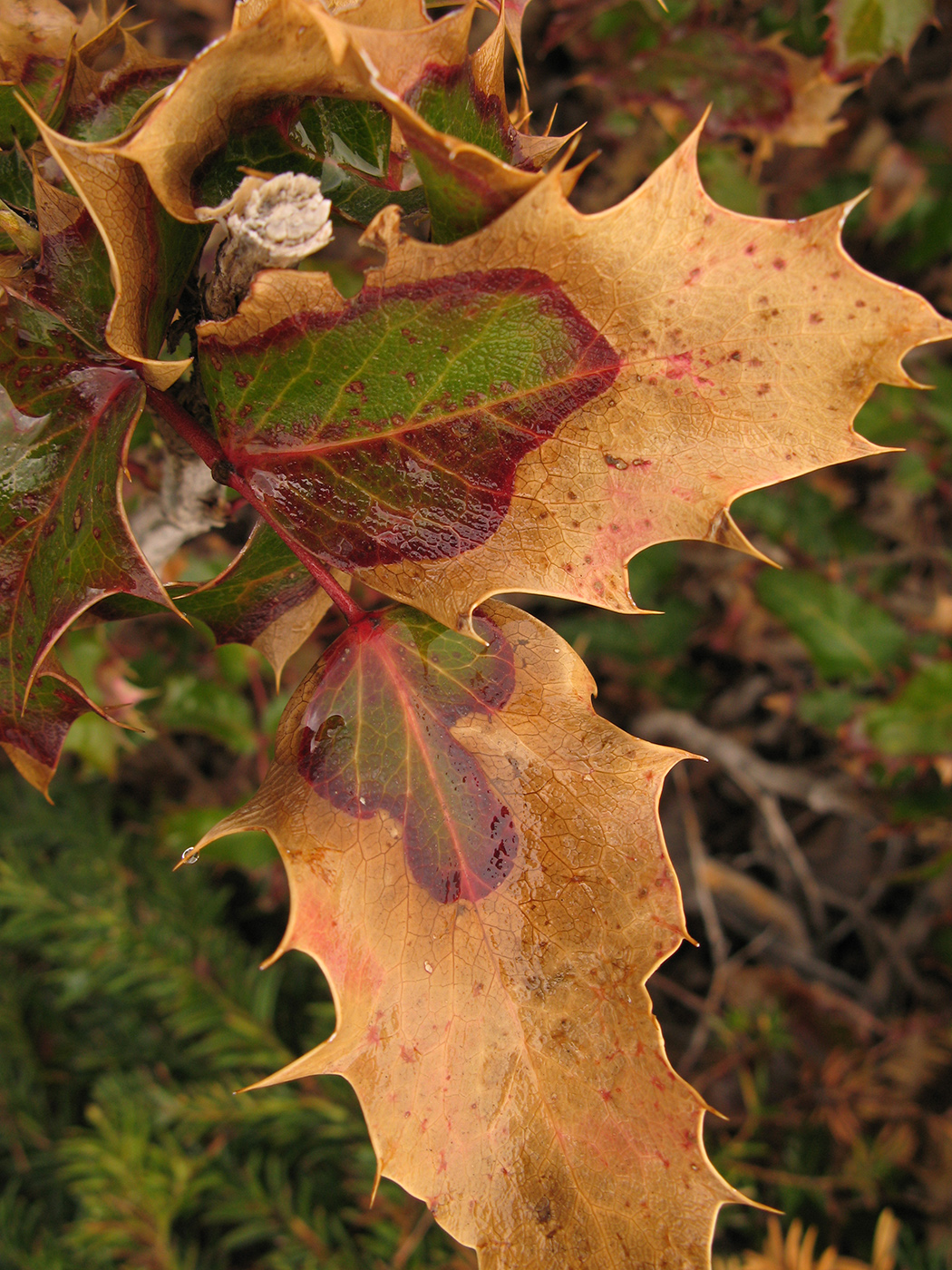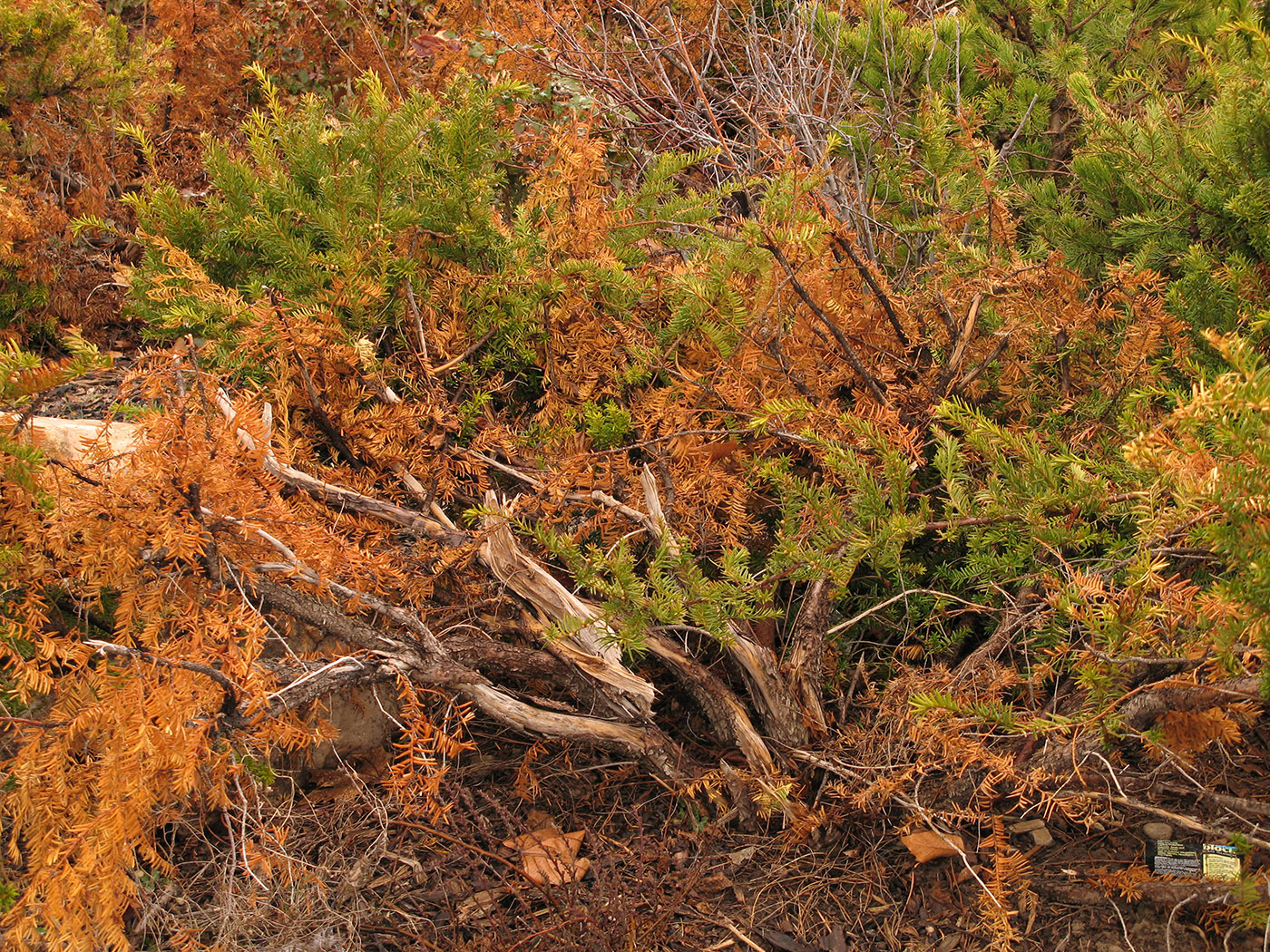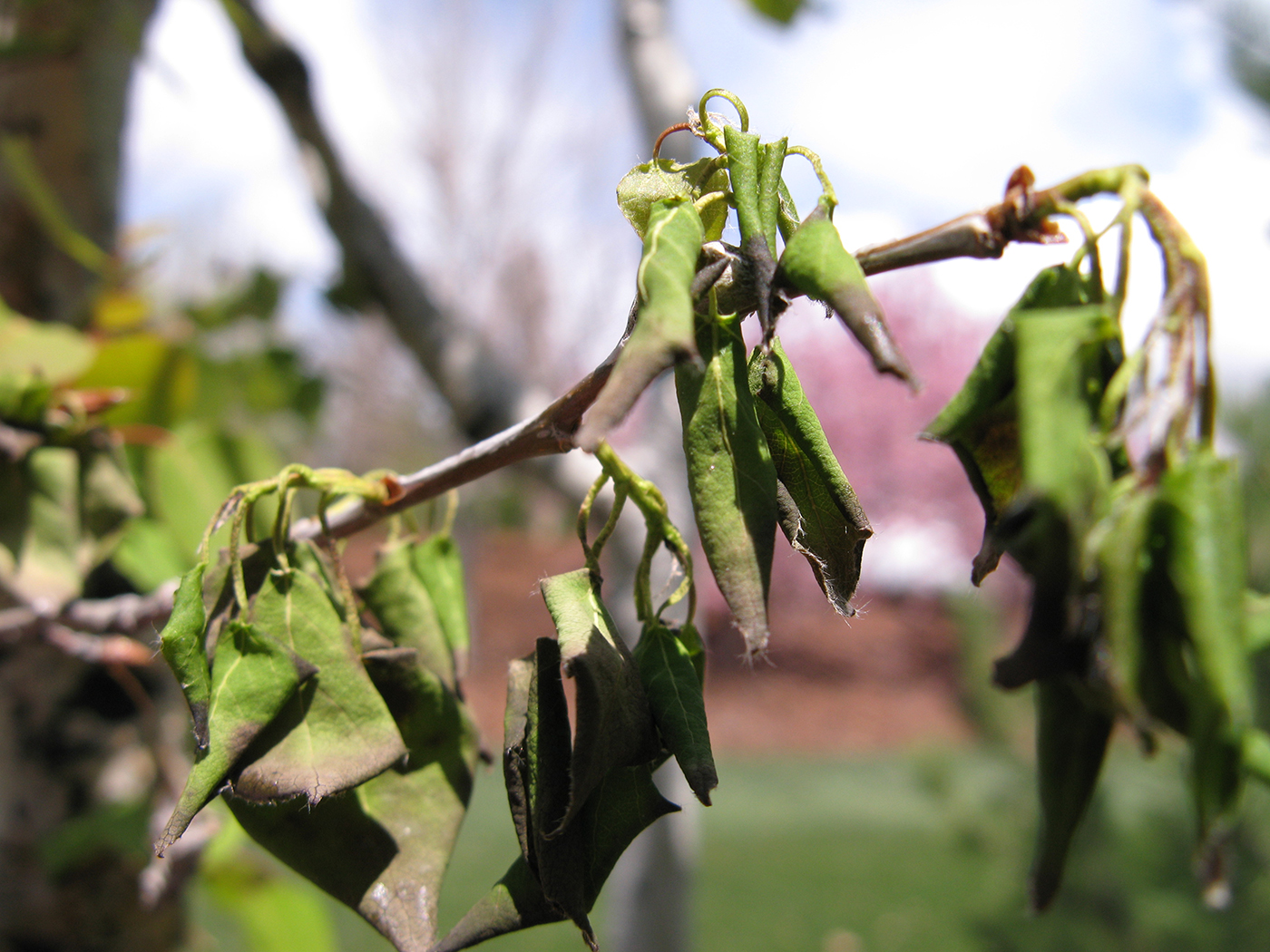Integrated Pest Management
Winter Injury
Winter injury of ornamentals is a common problem in Utah and can be difficult to diagnose because symptoms may not be apparent for several months after the event. Symptoms in the spring include dead twigs and branches, small leaves, or retarded growth.
LOW TEMPERATURE INJURY
Low temperature injury occurs when any of the following winter conditions occur: winter temperatures are much below normal, unusually low temperatures in early fall or late spring when trees are not fully dormant, or winter temperatures that fluctuate during the dormant period so that dormancy is broken and plant tissues are damaged. Severely cold temperatures will cause cavitation or air bubbles to form in the vascular elements making them nonfunctional. Marginally hardy trees, such as peach, may leaf out in the spring but, ultimately, die when the demand for water exceeds the capacity of the functioning vascular tissues.
Low temperature injury cannot be totally eliminated but can be reduced with some cultural techniques. Select cultivars of trees and shrubs that are known to be hardy in your area. Identify trees in your neighborhood that are doing well. Harden off plants early in the year. Do not fertilize trees after June 30. Avoid late summer pruning which may stimulate new growth. Irrigate your landscape plants late in the fall but prior to ground freezing. Trees and shrubs withstand severe winter temperatures better if soil moisture is adequate. Mulching the root zone with a thick layer of wood chips, sawdust, leaves, or straw retains moisture and moderates the temperature of the soil.
WINTER DESICCATION
Winter desiccation can cause severe injury to ornamentals. Even though trees are dormant during the winter, they are still transpiring water. If the soil is dry or completely frozen, the plant experiences conditions similar to drought. Browning of the needles or scorching of evergreen leaves, particularly on the southwest side, is a common symptom.
Winter desiccation can be prevented by watering trees and shrubs deeply in the fall prior to ground freezing. A thick mulch of wood chips, sawdust, leaves, or straw applied over the root zone after soil temperatures drop below 45 F will conserve soil moisture and moderate the soil temperature. Avoid planting most conifers and evergreen shrubs in unprotected southern exposures or areas where they are exposed to winter winds.
WINTER SUNSCALD
Sunscald, or southwest winter injury, is a problem of thin-barked trees such as maple, ash, crabapple, Mountain ash, and fruit trees. It is especially a problem on newly transplanted trees. Winter sunscald occurs when the bark on the south and west side of a tree warms during the day and then freezes at night. In the spring, a dead patch of sunken bark is apparent on the trunk. Later, this dead or weak tissue may become infected with the cytospora fungus which causes Cytospora canker. Evidence of cytospora infection is noticeable when the dead bark peels away in paper-like sheets and black fungal pycnidia are present. The fungus can girdle and kill the tree if it occurs on the main trunk.
Sunscald can be prevented by wrapping the trunk of newly transplanted trees with burlap or other commercial white wrapping materials. The wrap should be kept in place for two years and examined periodically to make sure it is not constricting the growth of the tree. White latex paint can also be used to reflect the heat of the winter sun. Other materials such as wooden lathe offer protection from the direct exposure to the southwest winter sun.
SNOW BREAKAGE
Snow breakage is a problem of multi-stemmed evergreens such as yews, arborvitae, and junipers. Heavy snow loads cause the branches to bend and separate from the center of the plant. If the snow load is heavy enough, the branch can break.
Evergreens can be protected from snow breakage by tying the branches together with strong rope or twine. If snow accumulates, it should be knocked off.
CORRECTING WINTER DAMAGE
If winter damage occurs, the following steps can be taken to correct the damage:
- Prune out dead branches in the spring.
- Fertilize the damaged ornamentals with a complete fertilizer.
- Winter damaged ornamentals should be watered deeply during dry period.
- Branch dieback may occur due to girdling at the base of the tree. Inarching or making a bridge graft may save the tree.




